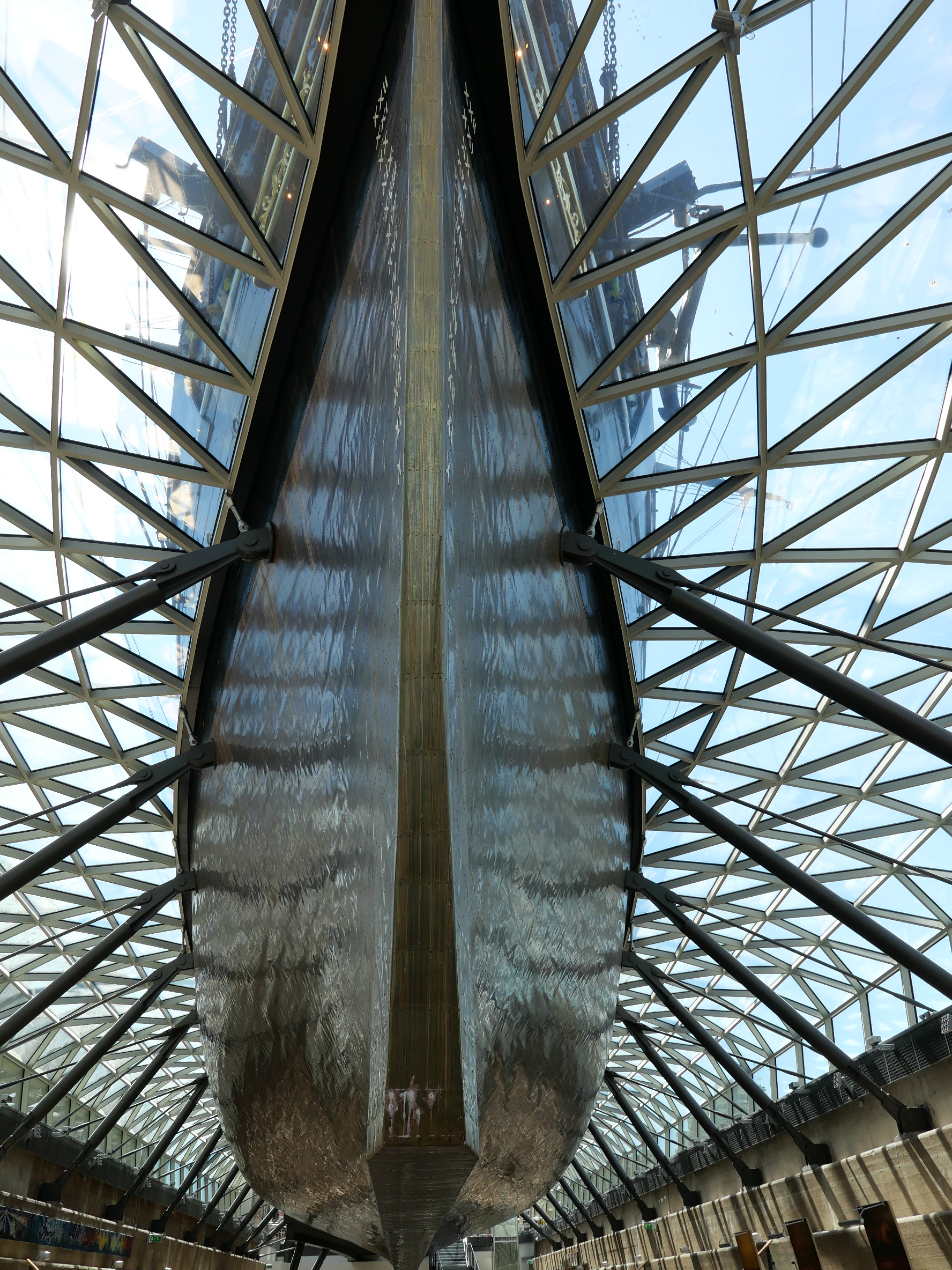Another 1000 ton Machine
by John
I saw Cutty Sark for the first time 40 years ago, and was transfixed by its beautiful lines and fine workmanship of construction .
Like most people I was devastated when it was severely damaged by fire in 2002 (or was 2007? I can’t remember. Anyway, they spent a lot of money and time repairing the damage. And I revisited it today.
What the Cutty Sark Trust has achieved is nothing short of remarkable.

Today, when I first saw it again, I thought “what is that strange glass structure around the hull? Are they trying to do something modern and arty?” The masts, rigging and hull otherwise appeared to be unchanged.
Then when I paid my money and went through the entrance… 1. I felt poorer. The entrance fee was $AUD 54 for Cutty Sark and the Greenwich Observatory. 2. I was astounded to see that the entire ship has been lifted off the ground by ~2.5 meters, and is supported by 24 large steel props.



It really is spectacular. The fine lines of the hull are absolutely stunning from beneath. And it has removed pressure from the ageing hull structure, which was sagging from its own weight. The metal sheathing is Muntz metal, an alloy of copper, used to prevent barnacles and algae from attaching to the hull and slowing the ship speed. I am unsure whether it has been renewed, or just polished, but as you can see it is gleamingly beautiful.
And speed was what this tea carrying cargo ship was all about. Each ship load of tea was worth about 6 million pounds, and there was huge competition between the clipper ship captains to be the first home to England with the precious cargo, to get the best prices.
This greyhound of the seas regularly hit 20 knots, and on one voyage from China, averaged 17 knots. (20 knots = 23 mph = 37 kph). Remember, this is a sailing ship. Many modern cargo ships would struggle to reach that speed.

The hull consists of 4″ thick planks, sheathed with Muntz metal, attached to steel ribs.

Inside the hull, showing the iron frame.

The lowermost section of the masts is rolled and riveted steel. Wood above that.

The masts and rigging are as I remember. Extremely complex and purposeful.
The intricate woodwork in the captain’s cabin and officers areas, the precisely made steering mechanism, the brass fittings are all as I remember. This really is a beautiful machine.

The steering mechanism. Left and right hand square thread. Precision metal work.

And there is a working model of the steering mechanism to demonstrate how it works, for those people who cannot figure it out for themselves. (like me).

I am thoroughly enjoying your travel blogs and can only wish that I were touring with you these past few days because we have such similar interests.
The price for admittance is fairly steep, but what a visual reward! I had no idea that the Cutty Sark was now housed in such a fabulous exhibit. Will she ever sail again?
Can’t wait to see your Greenwich Observatory observations. It has long been on my list of places I want to visit. It represents so much British history; the Harrison clock, longitude and Britain’s mastery of the sea. I’m a bit envious.
Safe travels!
LikeLike
Cutty Sark will never sail again alas. But just imagine ploughing through ocean waves at 20 knots! It must have been thrilling! And the exhibit is wonderful!
And I must admit that my motive for the Observatory was to catch up on the Harrisons which considering the era (1720-50), are mind boggling.
LikeLike